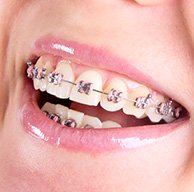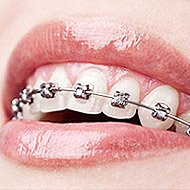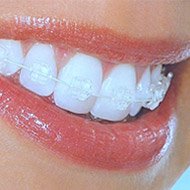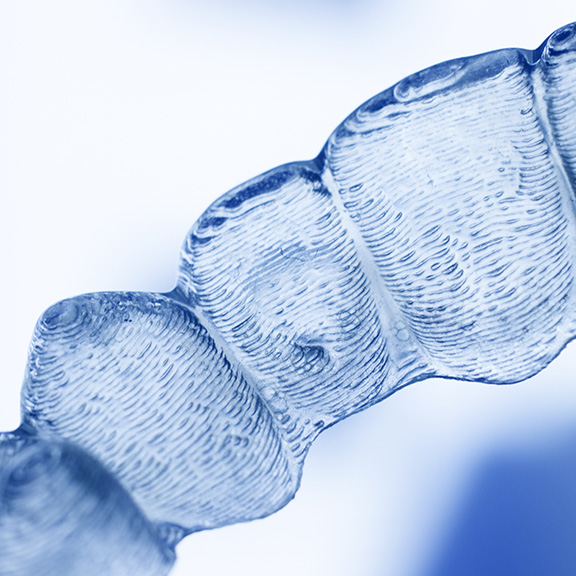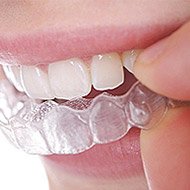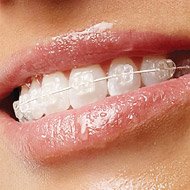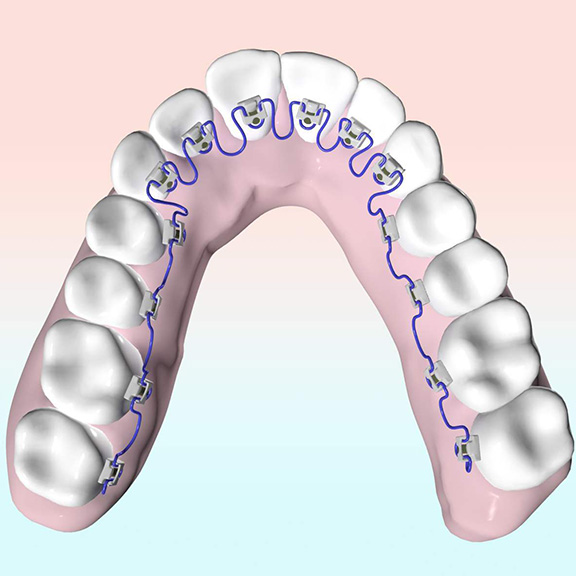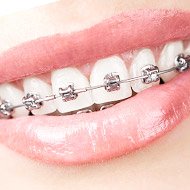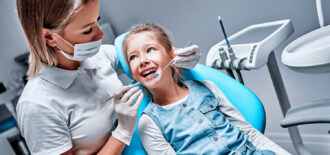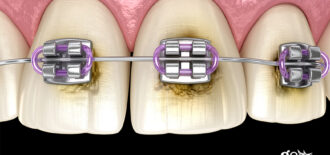
Metal braces – reliable, affordable and sleeker than ever!
Metal braces are still the most commonly used orthodontic treatment for a very good reason – they work! And they work very well. Today’s metal braces are smaller and more comfortable than those of the past. That means you can have the reliability and efficiency of metal braces, but in a much more sleek way.
What are the components of metal braces?
At Gire Orthodontics, we use metal braces that consist of the high-grade stainless steel. There are various components of your braces:
- Brackets — The braces themselves, called brackets, are attached directly to your teeth using a temporary special bonding glue to adhere them to your teeth.
- Archwire — Archwires are the metal wires that connect the brackets and are what place the pressure needed to guide your teeth to their new locations.
- Ligature Ties (also known as Ligature Elastics) — Ligature elastics or O-ties are the small colored ties that hold the main archwire in the braces. You can customize your treatment by choosing a pattern of various colors. Adults who choose this system tend to use the translucent ties so they’re not so noticeable.
Check Out Our Braces Reviews
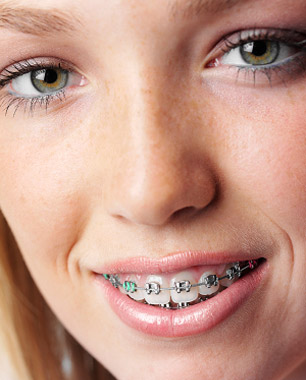
Constant, gentle pressure means a beautifully straight smile!
The combination of brackets and wires work by placing a gentle, constant pressure on the teeth. This gentle force works to guide the teeth to their new, more ideal positions. We may replace the archwires at each follow-up “adjustment” appointment so that we can ensure the correct amount of force is being applied. For certain patients, we may need to include the use elastics (or rubber bands) during treatment. Elastics work in tandem with the braces to guide the teeth to their new locations.
It’s very common to feel the sensation that the teeth are wiggly or loose during the course of orthodontic treatment. This is nothing to be concerned about, and in fact, it’s a good thing – it means the treatment is working! Your teeth must first loosen from their old locations before they can be guided to their new ones. Once your treatment is finished, you will wear a retainer to help your teeth solidify in their new locations.
This system is an ideal option for patients of all ages. Metal braces offer the highest degree of reliability and are considered the most economical option available.
Common issues corrected at Gire Orthodontics with metal braces
Overjet: This occurs when the upper front teeth are too far in front of the lower front teeth. Most people refer to this as an overbite, however, this is a horizontal (front to back) term. This results in buck-looking-teeth and can be caused by a lower jaw that is too small, an upper jaw that’s too far forward, or by habits such as digit sucking (thumb or other finger) or prolonged pacifier use.
Underbites: This occurs when the lower front teeth are in front of the top front teeth. If this particular situation is not corrected, patients will likely experience abnormal tooth wear and stress on the temporomandibular joint (TMJ).
Overbites or Deep-bites: This is a vertical problem where the front teeth overlap too far over the bottom teeth when biting down on the back teeth. In some cases, the overall bite may be so deep that the bottom teeth may bite into the upper palate just behind the top teeth.
Crossbites: These happen when the top front or back teeth are inside the lower teeth. This can be caused by misalignment of either the teeth or the jawbone. It can affect only one tooth, several teeth, or the entire jaw. There can be lopsided jaw growth if it’s occurring on one side of the mouth and since the upper and lower teeth are not contacting properly, the enamel surface of the teeth may wear much quicker.
Protrusion: This is when the upper and lower front teeth stick out excessively. This usually happens when the jaws are positioned too far forward or the jaws are positioned too far back and the teeth have grown in at an angle that makes them stick out to compensate. It can be uncomfortable or sometimes impossible to close the lips naturally around the front teeth. They are also more prone to trauma or breakage due to their location. Speech issues are often seen in these cases.
Crowding: This happens when there is not enough room for the teeth to erupt and space properly. Teeth may either be too large or the jaws are too small to properly accommodate the teeth. Teeth can be overlapped, rotated, or crooked. Patients with crowded teeth are more prone to decay and gum disease because it hinders their home care. If excessive, some teeth may need to be removed. Dr. Gire prefers to not remove teeth if at all possible but there are circumstances in which it becomes a necessity.
Spacing: This happens when there is too much space between the teeth. This can be caused by missing teeth, teeth that are too small, or oversized jaws. There are many options with regards to missing teeth or teeth that are small. Since Dr. Gire used to be a general dentist prior to specializing in orthodontics, he can guide you in making informed decisions with what to do with the spaces that may be excessive.
Open bites: This happens when the back teeth fit together and are contacting when biting down but the front teeth do not. Open bites are usually the result of certain habits, such as extended thumbsucking or pacifier use, or they are due to an underlying skeletal problem. Patients may have problems swallowing or speech issues with open bites.
Metal Braces (Traditional system) FAQ
Do metal braces work better than clear aligners (Spark or Invisalign)?
It really depends on your specific case. Some patients with complex malocclusions may benefit from metal braces over clear aligners, simply due to overall treatment length. Certain movements such as rotations or larger space closures (if teeth needed to be removed) are more efficient and predictable with traditional metal braces. Dr. Robert Gire will discuss in depth all of the treatment options that will provide you with the most ideal smile.
Do metal braces work faster than other types of braces?
There are distinct advantages and disadvantages to metal braces (traditional), clear braces (Symetri), self-ligating metal braces (Damon), and behind the teeth braces (Inbrace). Dr. Gire will advise you which type of braces will be more efficient with your particular situation.
Do metal braces work faster than clear aligners (Spark or Invisalign)?
Depends. For patients who have complex issues, in some instances metal braces are a better option because they can more efficiently achieve complicated movements. However, for patients with minor malocclusions, metal braces and clear aligners (Spark or Invisalign) can provide beautiful results in around the same amount of time.
How much do metal braces cost?
The average cost of metal braces ranges between $3,000 and $7,000. Costs vary depending on a variety of things, such as age at treatment, type of metal braces (traditional or self-ligating), surgical options, and the severity of the malocclusion.
Does insurance cover metal braces?
At Gire Orthodontics, as a benefit to all of our new and current patients, we will verify whether you have orthodontic coverage with your existing dental insurance provider. Most PPO dental plans have a benefit for braces, however, this will be verified for you by our offices during your complimentary consultation before initiating treatment.


